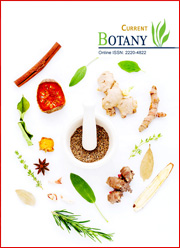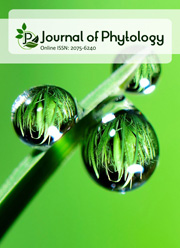Antioxidant and anti-inflammatory activities of different extracts from aerial parts of Zilla spinosa (L.) Prantl
DOI:
https://doi.org/10.25081/cb.2023.v14.8323Keywords:
Zilla spinosa L., Phytochemical screening, Antioxidant activity, Anti-inflammatory activityAbstract
Zilla spinosa L. is a medicinal plant widely used in traditional Algerian phytotherapy against urinary lithiasis. The present study aims to evaluate the antioxidant and anti-inflammatory effects of different extracts from the aerial part of this plant. The antioxidant activity of the extracts was examined by two different methods, 2,2-diphenyl-1-picrylhydrazyl (DPPH) and cupric reducing antioxidant capacity (CUPRAC). The anti-inflammatory activity of Z. spinosa was determined by the protein denaturation method. The qualitative phytochemical screening shows the presence of the majority of secondary metabolites in the aerial parts except anthraquinones and steroids, on the other hand, the root is characterized by the absence of several metabolites except tannins and coumarins.The ethyl acetate fraction displayed the highest antioxidant capacity (IC50 value: 10.47±0.18 μg/mL in DPPH assay, and A0.50 value: 40.89 ± 0.86 μg/mL in CUPRAC). The percentage of inhibition of BSA denaturation (0.2%) is proportional to the concentration of the different plant extracts, where the highest percentage was recorded in the concentrations of ethyl acetate 500; 250 μg/mL compared to Diclofenac (75 mg/3 mL), in contrast to the aqueous extract which gave non-significant results compared to the standards (p≥5℅). In comparison to the standards used in this study, the ethyl acetate extract demonstrated better DPPH inhibitory activity, while all organic extracts demonstrated lower CUPRAC inhibitory activity but higher anti-inflammatory activity.
Downloads
References
Alghanem, S. M., Al-Hadithy, O. N., & Milad, M. (2018). Regular article antimicrobial activity and phytochemical characterization from zilla spinosa. Journal of Medicinal Botany, 2, 24-27. https://doi.org/10.25081/jmb.2018.v2.987
Al-Shehbaz, I. A. (2012). A generic and tribal synopsis of the Brassicaceae (Cruciferae). Taxon, 61(5), 931-954. https://doi.org/10.1002/tax.615002
Apak, R., Güçlü, K., Özyürek, M., & Karademir, S. E. (2004). Novel total antioxidant capacity index for dietary polyphenols and vitamins C and E, using their cupric ion reducing capability in the presence of neocuproine: CUPRAC method. Journal of Agricultural and Food Chemistry, 52(26), 7970-7981. https://doi.org/10.1021/jf048741x
Azab, A., Nassar, A., & Azab, A. N. (2016). Anti-inflammatory activity of natural products. Molecules, 21(10), 1321. https://doi.org/10.3390/molecules21101321
Benarba, B. (2015). Use of medicinal plants by breast cancer patients in Algeria. EXCLI Journal, 14, 1164-1166. https://doi.org/10.17179/excli2015-571
Benarba, B., Pandiella, A., & Elmallah, A. (2016). Anticancer activity, phytochemical screening and acute toxicity evaluation of an aqueous extract of Aristolochia longa L. International Journal of Pharmaceutical and Phytopharmacological Research, 6(1), 20-26.
Berreghioua, A. (2016). Investigation phytochimique sur des extraits bioactifs de deux Brassicaceae médicinales du sud Algérien: Moricandia arvensis et Zilla macroptera. Doctoral dissertation, Université Abou Bekr Belkaid.
Berreghioua, A., Cheriti, A., & Belboukhari, N. (2014). Antibacterial activity of Zilla macroptera extracts from Algerian Sahara. PhytoChem & BioSub Journal, 8(2), 92-96.
Blois, M. S. (1958) Antioxidant Determinations by the Use of a Stable Free Radical. Nature, 181, 1199-1200. https://doi.org/10.1038/1811199a0
Bouchouka, E., Djilani, A., & Bekkouche, A. (2012). Antibacterial and antioxidant activities of three endemic plants from Algerian Sahara. Acta Scientiarum Polonorum Technologia Alimentaria, 11(1), 61-65.
Bruneton, J. (1999). Pharmacognosie, Phytochimie, plantes médicinales (3rd ed., pp. 199-204). Paris, France: Lavoisier éditions tec & doc, 199-204 p.
Chelghoum, M., Khitri, W., Bouzid, S., & Lakermi, A. (2021). New trends in the use of medicinal plants by Algerian diabetic patients, considerations of herb-drug interactions. Journal of Ethnopharmacology, 274, 113984. https://doi.org/10.1016/j.jep.2021.113984
Corlett, R. T. (2016). Plant diversity in a changing world: status, trends, and conservation needs. Plant Diversity, 38(1), 10-16. https://doi.org/10.1016/j.pld.2016.01.001
Deans, S. G., & Ritchie, G. (1987). Antibacterial properties of plant essential oils. International Journal of Food Microbiology, 5(2), 165-180. https://doi.org/10.1016/0168-1605(87)90034-1
El-Sawi, S. A., Motawe, H. M., Ahmad, S. S., & Ibrahim, M. E. (2018). Survey and assessment of chemical composition and biological activity of some wild plants growing in the Egyptian eastern desert. Journal of Materials and Environmental Sciences, 9(5), 1495-1502.
Fialho, L., Cunha-E-Silva, J. A., Santa-Maria, A. F., Madureira, F. A., & Iglesias, A. C. (2018). Comparative study of systemic early postoperative inflammatory response among elderly and non-elderly patients undergoing laparoscopic cholecystectomy. Revista do Colegio Brasileiro de Cirurgioes, 45(1), e1586. https://doi.org/10.1590/0100-6991e-20181586
Hara-Kudo, Y., Kobayashi, A., Sugita-Konishi, Y., & Kondo, K. (2004). Antibacterial activity of plants used in cooking for aroma and taste. Journal of Food Protection, 67(12), 2820-2824. https://doi.org/10.4315/0362-028x-67.12.2820
Harman, D. (1992). Free radical theory of aging. Mutation Research/DNAging, 275(3-6), 257-266. https://doi.org/10.1016/0921-8734(92)90030-s
Jang, C. H., Kim, Y. Y., Seong, J. Y., Kang, S. H., Jung, E. K., Sung, C. M., Kim, S. B., & Cho, Y. B. (2016). Clinical characteristics of pediatric external auditory canal cholesteatoma. International Journal of Pediatric Otorhinolaryngology, 87, 5-10. https://doi.org/10.1016/j.ijporl.2016.05.029
Kandikattu, K., Kumar, P. B. R., Priya, R. V., Kumar, K. S., Rathore, R. S. B. (2013). Evaluation of Anti-Inflammatory Activity of Canthium Parviflorum by in-vitro Method. Indian Journal of Research in Pharmacy and Biotechnology, 1(5), 729-731.
Kapewangolo, P., Omolo, J. J., Bruwer, R., Fonteh, P., & Meyer, D. (2015). Antioxidant and anti-inflammatory activity of Ocimum labiatum extract and isolated labdane diterpenoid. Journal of Inflammation (London, England), 12, 4. https://doi.org/10.1186/s12950-015-0049-4
Keffous, F., Belboukhari, N., Djaradi, H., Cheriti, A., Sekkoum, K., & Aboul-Enein, H. Y. (2016). Total antioxidant capacity, reducing power and cyclic voltammetry of Zilla Macroptera (Brassicaceae) Aqueous extract. Current Bioactive Compounds, 12(1), 39-43. https://doi.org/10.2174/1573407212666160210230707
Kumar, G. S., Jayaveera, K. N., Kumar, C. K., Sanjay, U. P., Swamy, B. M., & Kumar, D. V . (2007). Antimicrobial effects of Indian medicinal plants against acne inducing bacteria. Tropical Journal of Pharmaceutical Research, 6(2), 717-723. https://doi.org/10.4314/tjpr.v6i2.14651
Laurance, W. F., Useche, D. C., Rendeiro, J., Kalka, M., Bradshaw, C. J. A., Sloan, S. P., Laurance, S. G., Campbell, M., Abernethy, K., Alvarez, P., Arroyo-Rodriguez, V., Ashton, P., Benítez-Malvido, J., Blom, A., Bobo, K. S., Cannon, C. H., Cao, M., Carroll, R., Chapman, C.,…Zamzani, F. (2012). Averting biodiversity collapse in tropical forest protected areas. Nature, 489(7415), 290-294. https://doi.org/10.1038/nature11318
Liu, C. H., Abrams, N. D., Carrick, D. M., Chander, P., Dwyer, J., Hamlet, M. R. J., Macchiarini, F., PrabhuDas, M., Shen, G. L., Tandon, P., & Vedamony, M. M. (2017). Biomarkers of chronic inflammation in disease development and prevention: challenges and opportunities. Nature Immunology, 18, 1175-1180. https://doi.org/10.1038/ni.3828
Majhenič, L., Škerget, M., & Knez, Ž. (2007). Antioxidant and antimicrobial activity of guarana seed extracts. Food Chemistry, 104(3), 1258-1268. https://doi.org/10.1016/j.foodchem.2007.01.074
Mechaala, S., Bouatrous, Y., & Adouane, S. (2021). Traditional Knowledge and Diversity of Wild Medicinal Plants in El Kantara's Area (Algerian Sahara Gate): An Ethnobotany Survey. Acta Ecologica Sinica, 42(1), 33-45. https://doi.org/10.1016/j.chnaes.2021.01.007
Mecheri, R., Smati, D., & Daudon, M. (2023). Morphological and cyto-histo-anatomical study of the antilithiasis plant: Zilla spinosa L. Doctoral dissertation, Université Badji Mokhtar.
Oguntibeju, O. O. (2019). Hypoglycaemic and anti-diabetic activity of selected African medicinal plants. International Journal of Physiology, Pathophysiology and Pharmacology, 11(6), 224-237.
Petrovska, B. (2012). Revisión histórica del uso de plantas medicinales. Pharmacognosy Reviews, 6(11), 1-5.
Sekkoum, K., Belboukhari, N., Cheriti, A., & Aboul-Enein, H. Y. (2015). Chemical composition of the essential oil of Zilla macroptera coss. From Algerian sahara. Current Bioactive Compounds, 11(2), 100-103. https://doi.org/10.2174/1573407211666150130191436
Sekkoum, K., Cheriti, A., Taleb, S., Bourmita, Y., & Belboukhari, N. (2011). Traditional phytotherapy for urinary diseases in Bechar district (south west of Algeria). Electronic Journal of Environmental, Agricultural and Food Chemistry, 10(8), 2616-2622.
Tani, C. K., Bourgeois, T. L., & Munoz, F. (2010). Contribution à l'étude des communautés d'adventices des cultures du secteur phytogéographique Oranais (nord-ouest algérien): aspects botanique, agronomique et phyto-écologique. Paris, France: AFPP.
Virshette, S. J., Patil, M. K., & Somkuwar, A. P. (2019). A review on medicinal plants used as anti-inflammatory agents. Journal of Pharmacognosy and Phytochemistry, 8(4), 1641-1646.
WCSP. (2018). World checklist of selected plant families. Royal Botanic Gardens, Kew. Retrieved from http://apps.kew.org/wcsp/
Zengin, G., Aktumsek, A., Guler, G. O., Cakmak, Y. S., & Yildiztugay, E. (2011). Antioxidant Properties of Methanolic Extract and Fatty Acid Composition of Centaurea urvillei DC. subsp. hayekiana Wagenitz. Records of Natural Products, 5(2), 123-132.
Published
How to Cite
Issue
Section
Copyright (c) 2023 R. Mecheri, N. Mahfouf, D. Smati, A. Boutefnouchet

This work is licensed under a Creative Commons Attribution-NonCommercial 3.0 Unported License.



 .
.